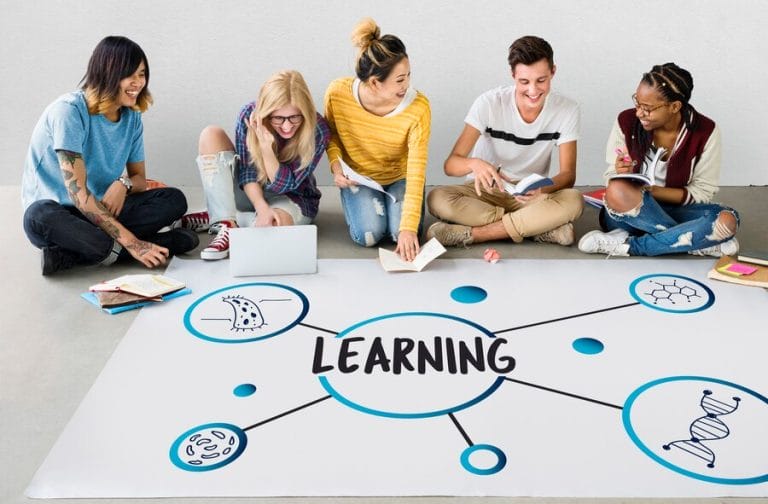Active Methodologies in Higher Education: Transforming Learning”
November 1, 2024 2024-10-25 11:18
Active Methodologies in Higher Education: Transforming Learning”
In higher education, active learning is becoming a key tool to enhance student engagement and comprehension. Active methodologies, which include a variety of teaching strategies such as problem-based learning and collaborative learning, seek to engage students in a more dynamic way, making the learning process more interactive and effective. These methodologies allow students to take a more active role in their own education, promoting deeper understanding and practical application of the knowledge they acquire.
What Are Active Methodologies?
Active methodologies refer to teaching approaches that require students to participate actively in their learning, rather than just being passive recipients of information. Unlike traditional teaching, where the teacher is the center and students mainly listen, active learning encourages students to collaborate, participate in discussions, solve problems, and apply knowledge in practical contexts.
Key characteristics of active methodologies include:
- Active Participation: Students engage in discussions and analyses of topics.
- Collaborative Learning: Students work in teams, developing communication and teamwork skills.
- Problem-Solving Focus: Situations and problems are presented for students to propose solutions and learn from experience.
- Autonomy and Responsibility: Students take a leading role in their learning, fostering independence and critical thinking.
Main Active Methodologies in Higher Education
There are several active methodologies that have been adapted and applied in the context of higher education. Each offers a unique approach, but all share the goal of creating a more participatory and meaningful learning environment for students.
1. Problem-Based Learning (PBL)
Problem-Based Learning is a methodology in which students learn by solving real or hypothetical problems. Instead of simply receiving information, students research, analyze, and propose solutions.
- Skill Development: This method helps students build research, analysis, and synthesis skills.
- Contextualized Learning: By working on real problems, students can see the practical application of their knowledge.
- Promotion of Autonomy: Students control their learning, identifying what they need to know and how to find information.
2. Collaborative Learning
Collaborative learning encourages teamwork and cooperation among students to achieve a common goal. In this method, students work together on activities or projects, sharing knowledge and skills.
- Development of Interpersonal Skills: Students learn to communicate effectively, negotiate, and collaborate.
- Diversity of Perspectives: Working in groups allows students to consider different viewpoints and enrich their understanding.
- Shared Responsibility: Students learn to take on roles and responsibilities within a team.
3. Flipped Classroom
The Flipped Classroom method changes the focus of traditional classes. Instead of receiving information in class and doing homework at home, students review theoretical content individually and use class time for practical activities, discussions, and addressing doubts.
- Maximized Class Time: Class time is used to apply knowledge rather than receive theory.
- Self-Paced Learning: Students can review theoretical material at their own pace.
- Enhanced Class Interaction: Students arrive with prior knowledge, which makes them more engaged in discussions and practical exercises.
4. Project-Based Learning (PBL)
Project-Based Learning involves students in the creation of a project that addresses a specific question or need. Students plan, develop, and present the project, applying theoretical knowledge in a practical way.
- Comprehensive Learning: Students integrate various areas of knowledge to complete the project.
- Creativity and Problem-Solving: Projects foster creativity and the ability to face challenges.
- Real-World Application: Projects are often related to real situations, motivating students and allowing them to see the impact of their work.
5. Debates and Guided Discussions
Debates and guided discussions allow students to express their opinions and arguments on a particular topic, promoting critical thinking and the ability to communicate ideas effectively.
- Argumentation Skills: Students learn to support their opinions and respond to other viewpoints.
- Critical Thinking: Discussing complex topics encourages analysis and reflection.
- Participation and Confidence: Students gain confidence in expressing their ideas in a respectful, constructive environment.
Benefits of Active Methodologies in Higher Education
Implementing active methodologies in higher education offers multiple benefits for both students and teachers. Some of the main benefits include:
- Enhanced Learning: Active methodologies promote a deeper, longer-lasting understanding of content, as students are actively involved in the process.
- Development of Soft Skills: Students develop essential skills such as teamwork, communication, leadership, and problem-solving.
- Increased Motivation and Engagement: Active, dynamic learning methods lead to greater interest and motivation among students.
- Preparation for Real-World Challenges: These methodologies simulate real-world situations and prepare students to tackle challenges outside of the academic setting.
- Strengthening of Autonomy: Students take a more active and responsible role in their learning, which prepares them for lifelong, self-directed learning.
Challenges in Implementing Active Methodologies
Despite their benefits, implementing active methodologies in higher education can present some challenges:
- Teacher Adaptation: Transitioning from traditional to active methodologies requires teachers to adapt their techniques and, in some cases, learn new pedagogical skills.
- Increased Preparation Time: Active methodologies often require more planning and organization for activities to be effective.
- Student Resistance: Some students may resist these methods, especially if they are accustomed to more passive approaches.
- Infrastructure and Resources: In some cases, a lack of resources or adequate spaces can make it difficult to implement certain active methodologies.
Strategies to Facilitate the Use of Active Methodologies
Here are some strategies that can help teachers effectively implement active methodologies in university settings:
- Teacher Training: Provide teachers with the tools and knowledge they need to confidently apply active methodologies.
- Design Effective Activities: Plan activities that are well-structured and encourage active student participation.
- Continuous Assessment: Regularly evaluate the impact of these methodologies to adjust and improve the process.
- Encourage an Open and Collaborative Environment: Create an environment of respect and support where students feel comfortable participating and sharing ideas.
Conclusion
Active methodologies in higher education represent a necessary evolution in the educational field. By fostering participatory learning, problem-solving, and teamwork, students not only acquire knowledge but also develop practical skills and personal competencies that prepare them for the workforce. Implementing these methodologies requires adaptation and effort, but the benefits in terms of motivation, learning, and professional readiness are significant.
For a more comprehensive look at how to apply active methodologies in higher education, you can watch this video: https://youtu.be/NGlLbp-QYus.
Related Posts
Active Methodologies in Higher Education: Transforming Learning”
November 1, 2024 2024-10-25 11:18Popular Tags





























